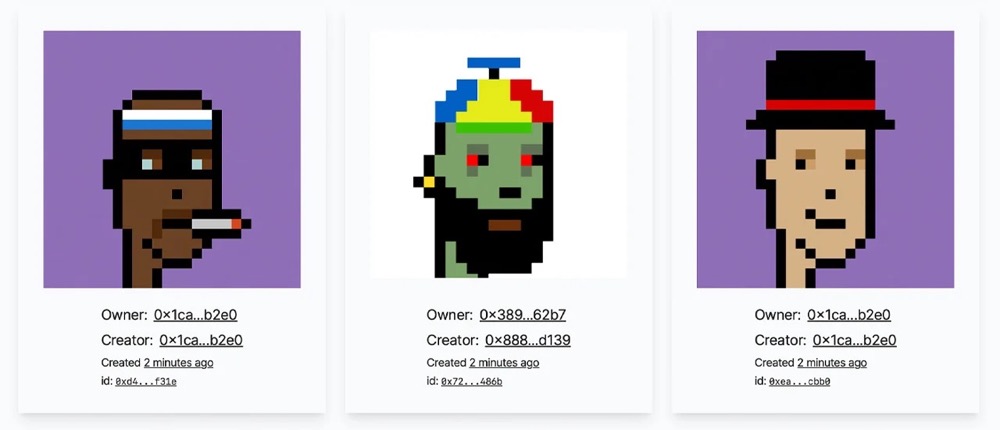Attention drawn to Ethscriptions, an Ethereum NFT protocol that competes with Ordinals, with over 30,000 minted in just a few days since launch.
Ethscriptions, an Ethereum NFT protocol, competes with Ordinals, with over 30,000 minted in just days since launch.Author: Nancy, BlockingNews
In less than half a year, the total number of Bitcoin Ordinals castings has exceeded 12 million. Riding on this new trend, the Ethereum inscription protocol Ethscriptions has also begun to be popular in the encrypted community, and more than 30,000 Ethscriptions have been cast.
Ethscriptions was officially launched by Tom Lehman, co-founder of music website Genius.com, on June 17. The inspiration came from the Bitcoin Ordinals protocol. The earliest Ethscriptions were created in 2016, and Tom Lehman developed a search engine and website for the protocol.

- Comprehensive Review of the Polygon zkEVM Ecosystem: Slow but Steady
- Exploring the Effectiveness of Layer2 Airdrops: A Case Study of Optimism and Arbitrum
- Cracking the interoperability trust problem: how will Web3 and cross-chain bridges ultimately evolve?
As a new method of using transaction call data to create and share digital artifacts on Ethereum, according to Tom Lehman, any successful Ethereum transaction that has input data (when interpreted as UTF-8) that is a valid data URI (Uniform Resource Identifier), and the data URI is unique, will create an Ethscription. Duplicate content will be ignored, and all valid MIME (media types) are supported; to keep the URI unique, there must be no Ethscription with the same content in the previous block or in an earlier transaction in the same block; any input data that is the transaction hash of a valid Ethscription, and the transaction sender is the Ethscription creator, is a valid Ethscription transmission.
Ethscriptions can write non-financial and arbitrary data into the Ethereum blockchain, as long as the file size does not exceed 96KB, and users can engrave any type of file. However, currently, the Ethscriptions protocol only allows users to create NFTs in the form of images, but this will change in the future. According to community members, Tom Lehman intends to add token indexing content to the Ethscriptions protocol.
These engravings use Ethereum “call data (Calldata)”, which is the data inside the smart contract, which is “cheaper” and more “decentralized” than the casting method using pure smart contracts. At the same time, the Ethscriptions protocol guarantees the uniqueness of all valid content, that is to say, theoretically, duplicate text inscriptions cannot be created. Users can view all Ethscriptions or browse by address on the website ethscriptions.com, which was launched by Tom Lehman.
Ethereum Punks is the first project based on the Ethscriptions protocol by Tom Lehman, and all 10,000 were cast in a matter of hours. According to OpenSea data, the total transaction volume of Ethscriptions has exceeded 200 ETH.

For this innovation experiment, the crypto community has mixed opinions. “Similar to Ordinals, what excites me about Ethscriptions is that developers are once again using blockchain technology, which is what drives innovation and adoption. This technology has been around for years, and this is the first time it has received widespread attention,” said NFT KOL Adam McBride.
However, crypto KOL Chainleft believes that the Ethscriptions protocol is marketed a bit strangely under the guise of innovation, as the technology has been around for many years. As early as 2016, people have been calling data to store custom data/art, with popular examples being Deafbeef, 0xmon, and Eulerbeats, which mainly achieved this by breaking the boundaries of the tools/technology at the time, and this is not the ideal way to store art. Although it can be accessed, it is not assigned to tokens, which is why Ethscriptions tries to solve this problem through off-chain consensus (fairness). In addition, state data provides more complete functionality, such as runtime dynamics or the programmability of art. Compared with Inscriptions, the possibility of being trimmed is much smaller, and there are more storage nodes. Ethscriptions can be called by ETH native contracts, while Inscriptions cannot, and of course, neither can execute runtime functions.
In summary, the innovation narrative of Bitcoin Ordinals has gone from controversial to popular in half a year since its launch, while it remains to be seen whether Ethscriptions can open the door for more innovators, and the community is the key to success.
We will continue to update Blocking; if you have any questions or suggestions, please contact us!
Was this article helpful?
93 out of 132 found this helpful
Related articles
- Analyze the three main characteristics of the Cosmos LSM module: what are the positive implications?
- Blockchain detective ZachXBT sued by “Big Brother Ma Ji”: Received donations of over one million US dollars, supported by CZ and Justin Sun
- Sei Network: The fastest Layer1 public chain on Cosmos designed for trading?
- Encrypted Twitter’s FOMO trap and the quiet arrival of ROMO art
- Final Battle between DEX and CEX? Uniswap V4 Remakes Liquidity Growth Flywheel
- Summary of the 111th Ethereum Core Developer Consensus Meeting: Deneb Upgrade, Aggregation Deadline, Increased Maximum Effective Validator Balance…
- Is “The Empress’s Seal” infringing on copyright? The issue is not that simple.






